UPSC DAILY CURRENT AFFAIRS (15TH JANUARY, 2025)
Mission Mausam
Syllabus: GS1/Climatology
Context
- The Prime Minister inaugurated Mission Mausam to mark the 150th anniversary of the India Meteorological Department (IMD).
About Mission Mausam
- Aim: To upgrade the capabilities of India’s weather department in forecasting, modelling, and dissemination.
- Features:
- Budget allocation: Rs 2,000 crore for the first two years of its implementation.
- Focus areas: Weather surveillance, modelling techniques and forecasting.
- Beneficiary Sectors: Agriculture, aviation, defence, disaster management, tourism and health.
- Phases:
- Phase 1 (2025- March 2026): Focus on expanding observation capabilities and conducting simulation experiments.
- Phase 2 (2026 onwards): Introduce satellites and aircraft to enhance observational precision.
- Supervision: Mission Masum will be spearheaded by three institutions funded by the Ministry of Earth Sciences.
- The IMD, the Indian Institute of Tropical Meteorology, Pune, and the National Centre for Medium-Range Weather Forecasting, Noida.
- Cloud Chamber: India will build a cloud chamber, as required to study Indian monsoon clouds.
| Cloud Chamber – India is establishing a first-of-its-kind cloud chamber at the Indian Institute of Tropical Meteorology (IITM), Pune. – A cloud chamber resembles a closed cylindrical or tubular drum, inside which water vapour, aerosols, etc. are injected. 1. Under the desired humidity and temperature inside this chamber, a cloud can develop. – It will allow scientists to study the seed particles that form cloud droplets or ice particles sustainably. |
Need
- Improved Forecasting: Enhance forecast accuracy by 5-10% and extend predictions to panchayat levels with a 10-15 day lead time.
- Advanced Technology: Utilise AI, machine learning, and high-performance supercomputers to better model weather systems.
- Better Air Quality Predictions: Improve air quality forecasts in metro cities by up to 10%.
- Nowcasting Improvements: Reduce nowcast frequency from three hours to one hour for real-time weather updates.
Significance
- Extreme Weather Events: India faces extreme weather events like cloudbursts, lightning, and heavy rainfall, often causing both droughts and floods at the same time.
- Current weather models struggle to track small-scale events, so there is a need to improve weather prediction and management.
- Weather Modification: The mission explores weather modification techniques such as cloud seeding, already used in countries like the US, China, and UAE.
- By dispersing materials such as silver iodide into clouds, rainfall can be induced or suppressed.
- Preventing Floods: Modify rainfall patterns during prolonged rain in flood-prone areas.
- Enhancing Rainfall: Address droughts by stimulating precipitation.
| India Meteorological Department (IMD) – It was established in 1875. – It is the principal government agency in all matters relating to meteorology and allied subjects. – It is under the Ministry of Earth Sciences (MoES). |
Israel-Hamas Draft Ceasefire Deal
Syllabus: GS2/IR
Context
- Hamas has accepted a draft agreement for a ceasefire in the Gaza Strip and the release of dozens of hostages.
About
- The United States, Egypt and Qatar have spent the past year trying to mediate an end to the 15-month war.
- The plan would need to be submitted to the Israeli Cabinet for final approval.
What is Hamas?
- Hamas is the largest Palestinian militant Islamist group and one of the two major political parties in the region.
- Currently, it governs more than two million Palestinians in the Gaza Strip.
- Foundation: The group was founded in the late 1980s, after the beginning of the first Palestinian uprising against Israel’s occupation of the West Bank and Gaza Strip.
- Hamas is designated a terrorist group by Israel, the United States, the European Union, the United Kingdom, and other countries.
Israel Palestine Conflict
- It is a decades long dispute between Israel and Palestine that began in the middle of the twentieth century when the Jews from various parts of the world were granted the homeland in present-day Israel by Britain.
- It is one of the world’s longest conflicts where Israel has occupied the West Bank and the Gaza Strip which the Palestine state claims.
- With time, the countries around have normalized the ties with Israel through the Abraham Accord, Oslo Accord, etc.
- But the deadlock still persists and the world community is persistent in its effort to attain the two-state solution.
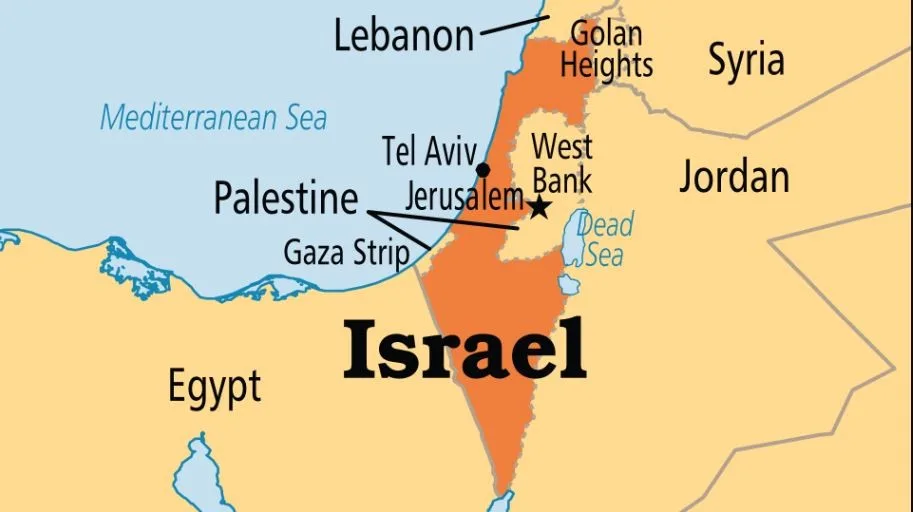
The Agreement
- It is a three-phase agreement — based on a framework laid out by US President Joe Biden and endorsed by the UN Security Council.
- First Phase: It would begin with the gradual release of 33 hostages over a six-week period in exchange for Palestinian women and children imprisoned by Israel.
- It will be a 42-day phase, Israeli forces would withdraw from population centers.
- In the second phase, Hamas would release the remaining living captives, mainly male soldiers, in exchange for more prisoners and the “complete withdrawal” of Israeli forces from Gaza.
- In a third phase, the bodies of remaining hostages would be returned in exchange for a three- to five-year reconstruction plan to be carried out in Gaza under international supervision.
Future Governance Of Gaza
- The current round of talks has not even addressed the issue of governance due to its complexity.
- Israel has said Hamas can play no role at all and it has rejected the involvement of the Palestinian Authority.
- Palestinian Authority is the body set up under the Oslo interim peace accords three decades ago that exercises limited sovereignty in the occupied West Bank.
- The international community has said that Gaza must be run by Palestinians but efforts to find alternatives to the main factions among civil society or clan leaders have proved largely fruitless.
National Turmeric Board
Syllabus: GS3/ Economy
Context
- The Union Minister of Commerce & Industry inaugurated the National Turmeric Board in New Delhi.
- Palle Ganga Reddy has been announced as its first Chairperson.
National Turmeric Board

- About: It is a dedicated body established to promote turmeric cultivation, research, and exports, ensuring holistic growth in the turmeric sector.
- Headquarters: Nizamabad, Telangana.
- Ministry: Operates under the Ministry of Commerce and Industry.
- Aim: To enhance turmeric production.
- Support farmers and improve their livelihoods.
- Boost global exports of turmeric and value-added products.
- Functions: The Board will also look into creating awareness on the essential and medical properties of turmeric, ways to increase its yield and boost logistics and supply chain to foster trade into newer markets.
| About Turmeric – Turmeric (Curcuma longa) is a flowering plant belonging to the ginger family, Zingiberaceae. – It is a perennial, rhizomatous, herbaceous plant native to the Indian subcontinent and Southeast Asia. 1. Turmeric is also known as ‘Golden Spice’. – Geographical Condition: Turmeric thrives in temperatures ranging between 20°C and 30°C with high annual rainfall. – Turmeric farmers are spread across 20 states, including Maharashtra, Tamil Nadu, Andhra Pradesh, Telangana, Madhya Pradesh, and Meghalaya. |
Turmeric Production in India
- India is the largest producer, consumer and exporter of turmeric in the world.
- It cultivates 30 varieties of turmeric across various regions and accounts for over 70% of global turmeric production.
- India has a cultivation area of 3.05 lakh hectares and a production of 10.74 lakh tonnes during 2023-24.
- India has more than 62% share of world trade. During 2023-24, 1.62 lakh tonnes of turmeric and turmeric products valued at 226.5 million USD was exported.
Operational Guidelines For ‘PM-Surya Ghar: Muft Bijli Yojana’
Syllabus: GS2/Government Policy and Intervention; GS3/Energy
Context
- The Ministry of New and Renewable Energy (MNRE) has recently issued operational guidelines for the implementation of various components under the ‘PM-Surya Ghar: Muft Bijli Yojana’.
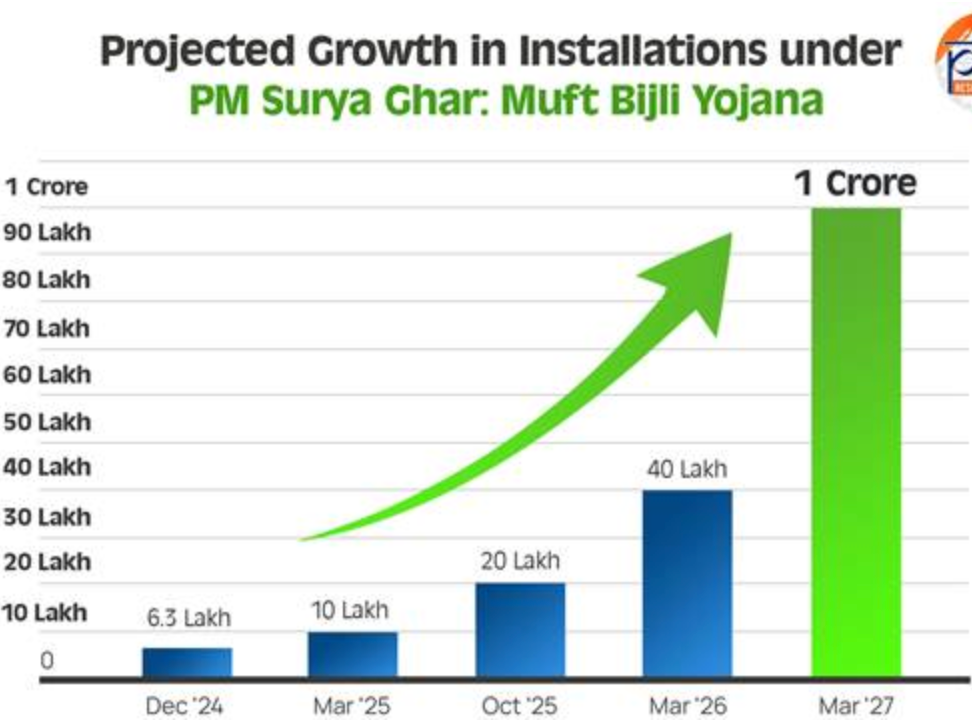
PM-Surya Ghar: Muft Bijli Yojana
- About: It was launched with the aim to promote the use of rooftop solar power in residential sectors under the Ministry of New and Renewable Energy (MNRE).
- Key Features:
- Subsidy and Financial Assistance: Offers a subsidy of up to 40% to reduce the upfront cost of rooftop solar installations.
- Payment Security Mechanism: Guarantees timely payments through DBT to vendors and installers, encouraging more participation from the private sector.
- Capacity Building and Training: Aims to create 3 lakh skilled manpower through fresh skilling and up-skilling programs.
- Ease of Application: The ‘National Portal for Rooftop Solar’ streamlines the application process.
- Model Solar Village: The “Model Solar Village” component aims to establish one solar-powered village per district across India, promoting energy self-reliance and solar adoption. ₹800 crore has been allocated, with ₹1 crore for each village.
Key Components of the Recent Guidelines
- Payment Security Mechanism (PSM): A ₹100 crore corpus fund has been established to de-risk investments in Renewable Energy Service Company (RESCO) based grid-connected rooftop solar models in the residential sector.
- This fund may be supplemented through other grants, funds, and sources after due approval from the Ministry.
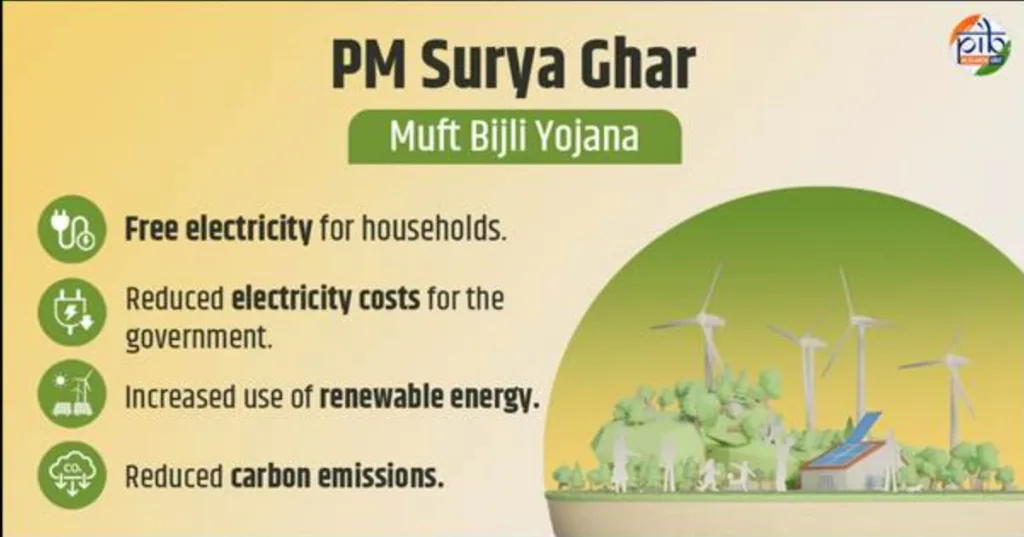
- Implementation Models:
- RESCO Model: Third-party entities invest in rooftop solar installations, allowing consumers to pay only for the electricity consumed without bearing the upfront costs.
- Utility-Led Aggregation (ULA) Model: DISCOMs or state-designated entities will install rooftop solar projects on behalf of individual residential sector households.
- Central Financial Assistance (CFA): Aims to support 1 crore residential consumers in installing rooftop solar systems.
| India and Renewable Energy – Total Electricity Generation Capacity: 452.69 GW (October 2024); 1. Renewable Energy: 203.18 GW (about 46.3% of total installed capacity), surged from 178.98 GW in October 2023. 2. It aligns with the country’s ambitious renewable energy target of achieving 500 GW from non-fossil sources by 2030. – India’s Nationally Determined Contributions (NDCs) target to achieve about 50% cumulative electric power installed capacity from non-fossil fuel-based energy resources and to reduce the emission intensity of its GDP by 45% from 2005 level by 2030. Solar Energy in India – About 5,000 trillion kWh per year energy is incident over India’s land area with most parts receiving 4-7 kWh per sqm per day. – National Institute of Solar Energy (NISE) has assessed the country’s solar potential of about 748 GW assuming 3% of the waste land area to be covered by Solar PV modules. – National Solar Mission (NSM) is one of the key missions in India’s National Action Plan on Climate Change (NAPCC). |
Global Cybersecurity Outlook 2025: World Economic Forum
Syllabus: GS 3/Cyber Security
In News
- The World Economic Forum (WEF) recently released Global Cybersecurity Outlook 2025.
About Global Cybersecurity Outlook 2025
- It is produced in collaboration with Accenture and it examines the cybersecurity trends that will affect economies and societies in the year to come.
- It explores major findings and puts a spotlight on the complexity of the cybersecurity landscape, which is intensified by geopolitical tensions, emerging technologies, supply chain interdependencies and cybercrime sophistication.
Key issues Highlighted
- Geopolitical Conflicts: Ongoing conflicts, such as the war in Ukraine, have increased cyber vulnerabilities in critical sectors like energy, telecommunications, and nuclear power.
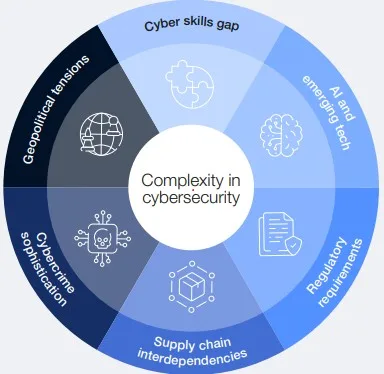
- Cybersecurity Readiness: Two-thirds of organizations anticipate AI impacting cybersecurity, but only one-third have requisite tools to assess AI-related risks, with smaller organizations facing significant challenges.
- Cyber Skills Gap: As of 2024, there is a shortage of 4.8 million cybersecurity professionals.
- Only 14% of organizations have a skilled workforce to address current cybersecurity challenges. Public-sector organizations are particularly impacted.
- Supply Chain Interdependencies: Over 50% of large organizations identify supply chain complexity as a barrier to cyber resilience.
- Concerns include vulnerabilities in third-party software, cyberattacks, and challenges in enforcing security standards.
- Cybercrime Sophistication: Cybercriminals are leveraging generative AI tools for more personalized and automated attacks, including phishing and social engineering.
- In 2024, 42% of organizations experienced phishing and deepfake attacks.
- Regulatory Challenges: 70% of organizations find cybersecurity regulations too complex, causing compliance issues.
Impacts
- Critical Infrastructure: Cyberattacks on water utilities, satellites, and power grids can disrupt essential services and public safety.
- An example of this is the October 2024 attack on a U.S. water utility.
- Biosecurity Risks: Advancements in AI, cyberattacks, and genetic engineering pose threats to laboratories and public safety.
- Incidents in South Africa and the UK highlight the risks.
- Economic Disparity: A divide in cyber resilience exists, with developed regions (e.g., Europe and North America) better prepared than emerging economies (e.g., Africa and Latin America).
- Transition Issues to RE: The shift to renewable energy systems introduces new vulnerabilities, making power grids attractive targets for cybercriminals.
Suggestions and Way Forward
- Strategic Investment: Cybersecurity should be treated as a strategic investment rather than a technical issue, with leadership focusing on technical and economic dimensions.
- Collaboration: Stronger collaboration between business and cybersecurity leaders is essential to manage growing threats and risks.
- Simplify Regulations: Streamline and harmonize global cybersecurity regulations to enhance compliance and resilience.
- Skills Development: Address the global cyber skills gap through targeted training and upskilling programs.
- Focus on Emerging Technologies: Organizations must develop tools to assess and mitigate risks associated with AI adoption.
FACTS IN NEWS
Kerch Strait
Syllabus: GS1/Geography
Context
- Two Russian oil tankers have been damaged in the Kerch Strait causing oil spillage.
Kerch Strait
- Location: It is a strait in Eastern Europe connecting the Sea of Azov with the Black Sea.
- It is located between the Kerch Peninsula in Crimea (annexed by Russia in 2014) and the Taman Peninsula in Russia.
- It gets its name from the Crimean city of Kerch, formerly known as the Cimmerian Bosporus.
- Kerch Strait Bridge: A significant feature of the Kerch Strait is the Kerch Strait Bridge, which connects the Crimean Peninsula to mainland Russia.
- The bridge, completed in 2018, serves both road and rail traffic.
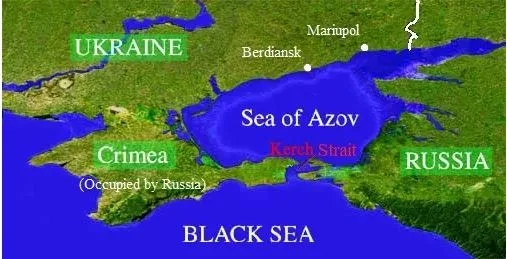
- Strait: A strait is a narrow body of water that connects two larger bodies of water, typically separating two land masses.
- Straits are important for maritime navigation, as they provide passage for ships between different seas or oceans.
Trichophyton Indotineae
Syllabus: GS2/Health
Context
- Dermatologists from India and 13 other counties, including Germany, have objected to the region-specific nomenclature given to a novel species of fungus — Trichophyton (T.) indotineae.
About
- Trichophyton indotineae: It is a fungal pathogen that causes widespread and hard-to-treat skin infections.
- It is resistant to most anti-fungal medicines.
- Origin: It has turned up in over 40 countries and its origin currently remains unknown.
- Nomenclature: Japanese dermatologists, who had spotted the fungus in patients from India and Nepal, proposed in 2020 that this fungus should be considered a new species and named Trichophyton indotineae.
- The naming of the species is in line with a historical tradition of linking new infectious agents to specific locations.
- Examples are the Spanish flu, Delhi boil, Madura foot, West Nile virus, etc.
- Concern: It often leads to considerable misinformation, stigma, and racial prejudice.
Autism Spectrum Disorders (ASD)
Syllabus :GS 2/Health
In News
- Autism diagnoses in the United States have risen sharply since 2000, raising public concern about the factors driving its prevalence.
Autism Spectrum Disorder (ASD)
- About: It is a neurological and developmental condition affecting communication, behavior, interaction, and learning due to disruptions in brain signaling.
- Causes: Likely due to genetic and environmental factors, including maternal health and birth complications.
- Genetic disorders (e.g., Fragile X syndrome) and environmental triggers (e.g., air pollution) may increase risk.
- Prevalence : The World Health Organization estimates global prevalence at 1%, up from 0.62% in 2012.
- Treatments: No cure; early diagnosis and intervention (before age 3) are key.
- Supportive therapies include speech therapy, occupational therapy, social skills training, and individualized education plans.
Credit-Deposit Ratio
Syllabus: GS3/Economy
Context
- Banks in India added more deposits than loans last year, leading to a softening of the credit-deposit ratio.
About
- CD ratio or the loan-to-deposit ratio is used to assess a bank’s liquidity by comparing its total loans to total deposit for the same period.
- Typically, the ideal loan-to-deposit ratio is 80% to 90%. A loan-to-deposit ratio of 100% means a bank loaned one dollar to customers for every dollar received in deposits it received.
- High CDR: Indicates that the bank is actively lending, which could lead to higher profitability but also higher risk if loan repayments are not met.
- If the ratio is too high, the lender does not have enough liquidity for unanticipated stress or sudden withdrawals of funds.
- Low CDR: Suggests that the bank is more conservative, lending less and holding more reserves, which reflect caution or an inability to find suitable lending opportunities.
Plasticizer Degradation Using Bacterial Enzymes
Syllabus: GS3/Environment
Context
- IIT Roorkee has successfully used an enzyme—esterase enzyme—to break down diethyl hexyl phthalate (DEHP) plasticizer.
About
- Esterase enzyme is produced by soil bacteria Sulfobacillus acidophilus.
- The enzyme breaks down the DEHP plasticizer into two products — mono-(2-ethylhexyl) phthalate (MEHP) and 2-ethyl hexanol.
- This esterase enzyme, along with other enzymes identified previously can convert high molecular weight phthalate plasticizers into water and carbon-dioxide.
- The esterase enzyme remains active for about a month and catalyzes the degradation of DEHP plasticizer with significant efficiency.
Applications
- Waste Management: Bacteria could be used in waste treatment facilities.
- Bioremediation: To clean up plastic pollution in natural ecosystems, such as oceans or rivers.
- Industrial Scale Degradation: With further genetic engineering and optimization, bacteria might be employed in industrial-scale bioreactors to efficiently break down plastics.
New Observatory at Remote Purulia District
Syllabus :GS 3/Science and Technology
In News
- The S N Bose National Centre for Basic Sciences (SNBCBS) has established a new observatory atop Panchet Hill in the Purulia district of West Bengal.
About Observatory
- It is an advanced astronomical observatory featuring a 14-inch telescope for scientific observations and training purposes.
- It is located at 600 meters above ground level and at 86° E longitude. It fills a gap in global astronomical observations, as very few observatories exist along this longitude.
- Purpose and Significance: It will aid in scientific observations of astronomical objects, train students in telescope handling, record data, and foster national and international collaboration in astronomical research.
- It is crucial for observing transient astronomical phenomena.
Other Key Observatories in India
- Aryabhatta Research Institute of Observational Sciences (ARIES): Nainital.
- Vainu Bappu Observatory: Tamil Nadu.
- IUCAA Observatory: Pune.
Indian Army Day
Syllabus :GS 3/Defence
In News
- The 77th Army Day is being celebrated in India with a theme of “Samarth Bharat, Saksham Sena”.
About Army Day
- It is celebrated on January 15 each year to honor General (later Field Marshal) KM Cariappa, the first Commander-in-Chief of the Indian Army.
- On this day in 1949, Gen Cariappa took over the command of the Indian Army from General Sir FRR Bucher, the last British Commander-in-Chief, marking the transition to an independent Indian Army.
- Gen Cariappa is also known for leading Indian forces to victory in the India-Pakistan 1947 war.
About Indian Army Veterans’ Day
- Celebrated annually on January 14th.
- This day commemorates the retirement of Field Marshal K.M. Cariappa, the first Indian Commander-in-Chief of the Indian Army.
- It is a day to recognize and appreciate the contributions and sacrifices of retired Indian Army personnel.
| Do you know? – The Indian Army traces its origins to the East India Company’s army, which later became the British Indian Army and the Princely States Army. – After India’s independence in 1947, these forces merged into the National Army of India. – The primary role of the Indian Army is to protect the nation from external and internal threats, as well as conduct humanitarian rescue operations during natural disasters. |
Bhargavastra Micro Missiles
Syllabus: GS3/ Defence
Context
- India has successfully tested the Bhargavastra, its first micro-missile system designed to counter swarm drones.
About
- Advanced Targeting: The Bhargavastra system successfully hit designated virtual targets over 2.5 kilometres away, demonstrating high precision and effectiveness.
- Enhanced Radar Capabilities: It can detect medium to large UAVs up to 10 kilometres and small drones up to 6 kilometres away, making it effective against a wide range of aerial threats.
- Versatile Deployment: Bhargavastra can be mounted on mobile platforms, enabling rapid deployment and adaptability to diverse operational terrains, including high-altitude regions.
Green Energy Open Access Rules, 2022
Syllabus: GS3/ Energy
Context
- The High Court of Karnataka has struck down the Electricity (Promoting Renewable Energy Through Green Energy Open Access) Rules, 2022.
About the ruling
- The High Court of Karnataka ruled that the Central Government lacked the authority under the Electricity Act, 2003 to frame the GEOA Rules, 2022.
- The Electricity Act, 2003 grants exclusive powers to State Electricity Regulatory Commissions (SERCs) to regulate open access in electricity distribution.
Salient Features of GEOA Rules, 2022
- These rules are notified for promoting generation, purchase and consumption of green energy including the energy from Waste-to-Energy plants.
- The Green Open Access is allowed to any consumer and the limit of Open Access Transaction has been reduced from 1 MW to 100 kW for green energy, to enable small consumers also to purchase renewable power through open access.
- Consumers are entitled to demand supply of Green Power from Discoms.
- Discoms would be obligated to procure and supply green power to eligible consumers.
- Commercial and Industrial consumers are allowed to purchase green power on a voluntary basis.
- There shall be a uniform Renewable Purchase Obligation (RPO), on all obligated entities in the area of a distribution license.
- Green Hydrogen/Green Ammonia has also been included for fulfillment of its RPO.
